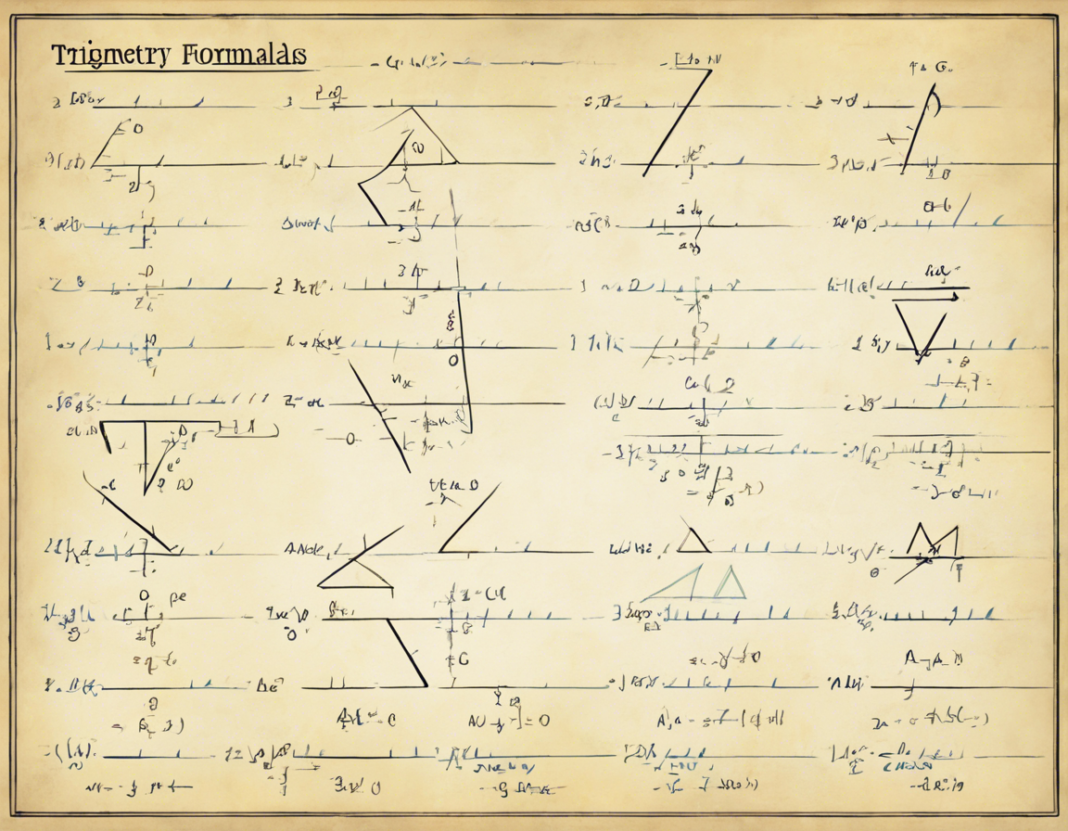Trigonometry is a branch of mathematics that deals with the relationships between the sides and angles of triangles. It is a fundamental concept in mathematics, with applications in various fields such as physics, engineering, astronomy, and more. In this comprehensive guide, we will delve into the master trigonometry formulas that are essential for success in understanding and applying trigonometric concepts.
Trigonometric Ratios and Identities
Trigonometry is based on trigonometric ratios, which define the relationships between the sides of a right triangle. The three main trigonometric ratios are:
- Sine (sin): Opposite side / Hypotenuse
- Cosine (cos): Adjacent side / Hypotenuse
- Tangent (tan): Opposite side / Adjacent side
These ratios form the basis of trigonometric identities, such as:
- Pythagorean Identity: sin²θ + cos²θ = 1
- Reciprocal Identities: cscθ = 1/sinθ, secθ = 1/cosθ, cotθ = 1/tanθ
- Quotient Identities: tanθ = sinθ/cosθ, cotθ = 1/tanθ
Trigonometric Functions of Special Angles
Understanding trigonometric functions of special angles (0°, 30°, 45°, 60°, 90°) is crucial for solving trigonometric problems efficiently. Here are the key values of sine, cosine, and tangent for these angles:
- sin 0° = 0, cos 0° = 1, tan 0° = 0
- sin 30° = 1/2, cos 30° = √3/2, tan 30° = 1/√3
- sin 45° = √2/2, cos 45° = √2/2, tan 45° = 1
- sin 60° = √3/2, cos 60° = 1/2, tan 60° = √3
- sin 90° = 1, cos 90° = 0 (undefined), tan 90° = ∞
Sum and Difference Formulas
The sum and difference formulas for sine and cosine allow us to find the sine, cosine, or tangent of the sum or difference of two angles. These formulas are:
- sin(A ± B) = sinA cosB ± cosA sinB
- cos(A ± B) = cosA cosB ∓ sinA sinB
- tan(A ± B) = (tanA ± tanB) / (1 ∓ tanA tanB)
Double Angle Formulas
Double angle formulas are used to find the sine, cosine, or tangent of double angles. The key double angle formulas are:
- sin(2A) = 2sinA cosA
- cos(2A) = cos²A – sin²A
- tan(2A) = 2tanA / (1 – tan²A)
Half Angle Formulas
Half angle formulas are used to find the sine, cosine, or tangent of half angles. The half angle formulas are:
- sin(A/2) = ±√((1 – cosA) / 2)
- cos(A/2) = ±√((1 + cosA) / 2)
- tan(A/2) = ±√((1 – cosA) / (1 + cosA))
Product to Sum Formulas
Product to sum formulas are used to convert the product of two trigonometric functions into a sum or difference of trigonometric functions. The formulas are:
- sinA sinB = (1/2)(cos(A – B) – cos(A + B))
- cosA cosB = (1/2)(cos(A – B) + cos(A + B))
- sinA cosB = (1/2)(sin(A + B) + sin(A – B))
FAQ
1. What are the basic trigonometric ratios?
The basic trigonometric ratios are sine (sin), cosine (cos), and tangent (tan), defined as the ratios of the sides of a right triangle.
2. How do I remember the trigonometric ratios for special angles?
You can use the acronym “SOHCAHTOA” to remember the trigonometric ratios: Sine = Opposite/Hypotenuse, Cosine = Adjacent/Hypotenuse, Tangent = Opposite/Adjacent.
3. Why are trigonometric identities important?
Trigonometric identities help simplify trigonometric expressions and equations, making it easier to solve complex problems.
4. How do I use the sum and difference formulas in trigonometry?
The sum and difference formulas for trigonometry are used to find the trigonometric functions of the sum or difference of two angles, helping in simplifying expressions and solving equations.
5. What are the key double angle formulas?
Double angle formulas are used to find the trigonometric functions of double angles, providing a shortcut to derive complex trigonometric expressions.
Mastering these trigonometry formulas and identities is essential for success in solving trigonometric problems and understanding the relationships between angles and sides in a triangle. By practicing and applying these formulas, you can enhance your trigonometry skills and tackle more advanced mathematical challenges with confidence.
